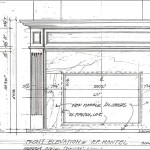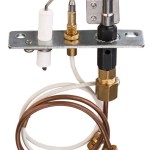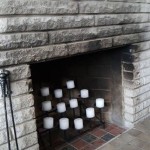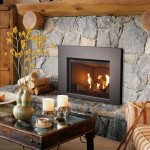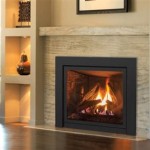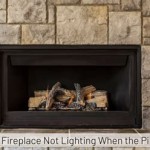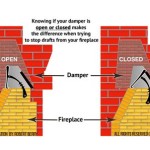Non-Venting Fireplace Inserts: A Comprehensive Guide
Non-venting fireplace inserts, also known as ventless or unvented fireplace inserts, offer a convenient and often cost-effective alternative to traditional wood-burning fireplaces or vented gas inserts. They operate without the need for a chimney or flue, making them adaptable to a wider range of homes and spaces. Understanding the mechanics, benefits, limitations, and safety considerations associated with non-venting fireplace inserts is crucial for making an informed decision about their suitability for a particular application.
This article provides a comprehensive overview of non-venting fireplace inserts, covering their operational principles, advantages, disadvantages, installation requirements, safety features, and maintenance protocols. It aims to equip readers with the necessary knowledge to evaluate whether a non-venting fireplace insert aligns with theirHeating needs and safety priorities.
Fundamentally, non-venting fireplace inserts function by burning fuel, typically natural gas or propane, in a highly controlled manner. The combustion process is engineered to be exceptionally clean, minimizing the production of harmful byproducts such as carbon monoxide. Specialized burner technologies and catalytic converters are often employed to achieve complete combustion, reducing emissions to levels deemed safe for indoor use by regulatory agencies.
The absence of a venting system allows for the retention of heat within the room, resulting in higher energy efficiency compared to traditional fireplaces. Traditional fireplaces lose a significant portion of their heat up the chimney, whereas non-venting inserts radiate heat directly into the living space. This characteristic can translate into lower heating bills and improved comfort, especially in localized areas.
The aesthetic appeal of non-venting fireplace inserts is another significant draw for many homeowners. They are available in a wide variety of styles, sizes, and finishes, allowing for seamless integration into diverse interior designs. From contemporary minimalist designs to classic traditional facades, there is a non-venting fireplace insert to complement almost any architectural style. Many models also feature realistic artificial logs and flickering flames, creating the ambiance of a traditional wood-burning fire without the mess and inconvenience.
Understanding the Operational Principles
The core operational principle of a non-venting fireplace insert hinges on complete combustion. Unlike vented fireplaces, which rely on a chimney to exhaust combustion byproducts, non-venting inserts are designed to minimize these byproducts to acceptable levels for indoor air quality. Catalytic converters play a crucial role in this process, oxidizing remaining unburned hydrocarbons and carbon monoxide into carbon dioxide and water vapor. These converters are typically coated with a precious metal catalyst, such as platinum or palladium, which facilitates the chemical reaction at lower temperatures.
Oxygen Depletion Sensors (ODS) are integral safety components in non-venting fireplace inserts. These sensors continuously monitor the oxygen levels in the room. If the oxygen level drops below a predetermined threshold, typically due to incomplete combustion or inadequate ventilation, the ODS will automatically shut off the gas supply to the burner, preventing the buildup of dangerous carbon monoxide levels. This safety mechanism is mandated by many building codes and regulations governing the use of non-venting appliances.
Burner design also plays a critical role in achieving complete combustion. Non-venting fireplace inserts often utilize specialized burner designs that promote thorough mixing of fuel and air, ensuring that all fuel is completely burned. These burner systems are often optimized for specific fuel types (natural gas or propane) to maximize efficiency and minimize emissions. The precision of the burner design is essential for maintaining optimal combustion conditions and minimizing the risk of incomplete combustion, especially under varying operating conditions.
Different models employ varying technologies to achieve these combustion goals. Some use infrared burners, which radiate heat efficiently and promote cleaner burning. Others use blue flame burners, which produce a concentrated flame and are designed for optimal fuel-air mixing. The choice of burner technology can influence the overall efficiency, emissions, and appearance of the fireplace insert.
Advantages of Non-Venting Fireplace Inserts
One of the primary advantages of non-venting fireplace inserts is their ease of installation. Given the absence of venting requirements, they can be installed in locations where traditional fireplaces or vented inserts would be impractical or impossible to install. This flexibility opens up a wider range of possibilities for adding a fireplace to existing homes or new construction projects. Installation costs are typically lower compared to vented options, as they eliminate the need for chimney construction or modification.
Energy efficiency is another significant benefit. Because all the heat generated by the combustion process is radiated into the room, non-venting fireplace inserts typically boast higher efficiency ratings compared to traditional fireplaces. This translates into lower energy bills and improved heating performance, particularly in localized areas. The radiant heat provides a comfortable and consistent warming effect, enhancing the overall ambiance of the space.
The aesthetic versatility of non-venting fireplace inserts is also a compelling factor. They are available in a wide range of styles, sizes, and finishes, allowing homeowners to choose a model that perfectly complements their interior décor. From contemporary linear designs to traditional log sets, there is a non-venting fireplace insert to suit almost any aesthetic preference. This adaptability makes them a popular choice for both new construction and renovation projects.
Further, non-venting fireplace inserts often offer convenient features such as remote control operation, thermostatic control, and programmable timers. These features enhance user convenience and allow for precise control over the heating output and operating schedule of the fireplace insert. Remote control operation allows users to adjust the flame height, temperature, and on/off status from the comfort of their seats. Thermostatic control ensures consistent room temperature by automatically adjusting the flame height based on the desired setting. Programmable timers allow users to schedule the fireplace insert to turn on and off at specific times, further optimizing energy efficiency and convenience.
Limitations and Safety Considerations
Despite their advantages, non-venting fireplace inserts have certain limitations and require careful consideration of safety aspects. Ventilation is crucial for safe operation. While they do not require a chimney, adequate ventilation is necessary to ensure sufficient oxygen levels in the room and to prevent the buildup of carbon dioxide and other combustion byproducts.
It is imperative to adhere to the manufacturer's recommendations regarding room size and ventilation requirements. Most non-venting fireplace inserts specify a minimum room size and may require the provision of fresh air through a window, vent, or other means. Failure to provide adequate ventilation can lead to oxygen depletion, incomplete combustion, and the buildup of harmful gases.
Carbon monoxide detection is essential when using non-venting fireplace inserts. Carbon monoxide is a colorless, odorless, and potentially lethal gas. A properly functioning carbon monoxide detector should be installed in the room where the fireplace insert is located, as well as in adjacent living areas. The detector should be regularly tested and replaced according to the manufacturer's instructions.
Fuel type restrictions are another important consideration. Non-venting fireplace inserts are typically designed to operate on either natural gas or propane. It is critical to use the fuel type specified by the manufacturer and to ensure that the gas supply is properly connected and regulated. Attempting to use the wrong fuel type can result in incomplete combustion, increased emissions, and potential safety hazards.
Furthermore, some individuals may be more sensitive to the combustion byproducts emitted by non-venting fireplace inserts. People with respiratory conditions, such as asthma or COPD, may experience adverse reactions to even low levels of combustion byproducts. It is advisable to consult with a healthcare professional before using a non-venting fireplace insert if you have any respiratory concerns. Regular maintenance, including cleaning the burner and catalytic converter, is essential for ensuring optimal performance and minimizing emissions.
Local building codes and regulations should be thoroughly reviewed prior to installing a non-venting fireplace insert. Some jurisdictions may have specific restrictions or requirements regarding their use, including ventilation requirements, installation standards, and safety certifications. Compliance with these regulations is essential for ensuring safe and legal operation.
In summary, non-venting fireplace inserts offer a compelling combination of convenience, efficiency, and aesthetic appeal. However, it is crucial to understand their operational principles, limitations, and safety considerations before making a purchase. Adequate ventilation, carbon monoxide detection, adherence to fuel type restrictions, and compliance with local building codes are all essential for ensuring safe and responsible operation.

Vent Free Inserts White Mountain Hearth
:max_bytes(150000):strip_icc()/ventless-gas-fireplaces-4160746-hero-f9d4bdcd9bd446eb84406de306f790ba.jpg?strip=all)
How To Pick Out A Ventless Gas Fireplace

White Mountain Hearth By Empire Ventless Outdoor Traditional Premium Gas Fireplace 36

Vent Free Gas Fireplaces Inserts Stoves Napolis Godby Hearth And Home

What Is A Ventless Gas Fireplace Experts In Gaithersbutg Md

ᑕ❶ᑐ Ventless Gas Fireplace Insert Disadvantages Of Use

Vent Free Inserts White Mountain Hearth

Superior 32 Inch Vent Free Gas Firebox Vrt3132 North Country Fire

Monessen Solstice Traditional Vent Free Fireplace Insert Fine S Gas

Procom Universal Ventless Firebox 170016 The Home Depot
Related Posts

